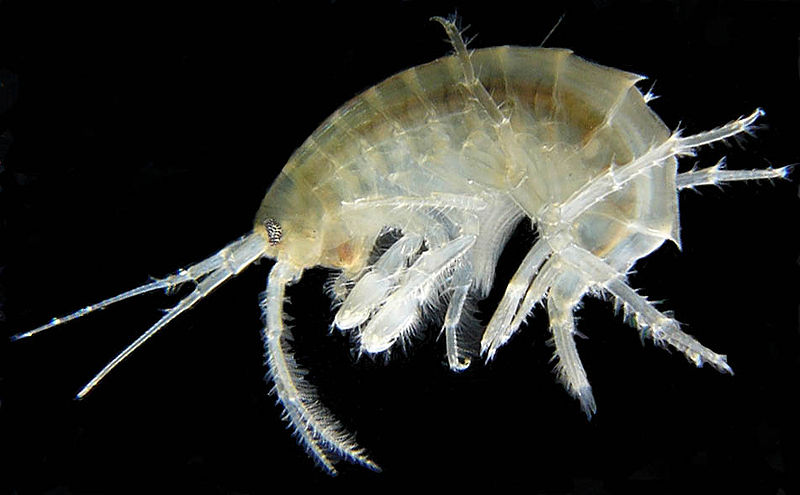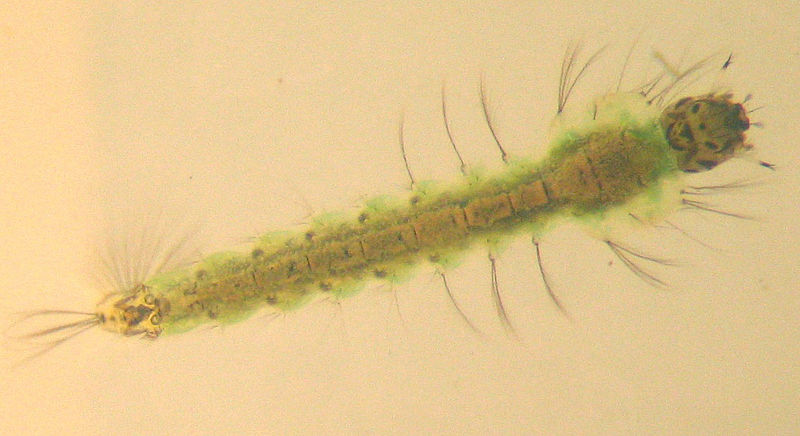 It’s that time of year again…time to slip on the rubber boots or waders to clean out the muck accumulated in the bottom of your pond. Though it’s always nice to see our finned friends coming back to the surface to see us after a long Winter, there are also many things we can encounter in the pond that most of us would rather be left unseen. I’m talking about the nasty, writhing, wiggling creatures that take refuge in the muck and dormant filtration. While there are thousands of microscopic creatures in a pond that you will probably never have the opportunity to see, it’s the worms and larvae that you can see with the naked eye that can cause panic or alarm if you don’t know what you’re looking at. I’d like to take this opportunity to talk to you about a few of the common critters you may find in your pond to hopefully save you some worries in the coming weeks.
It’s that time of year again…time to slip on the rubber boots or waders to clean out the muck accumulated in the bottom of your pond. Though it’s always nice to see our finned friends coming back to the surface to see us after a long Winter, there are also many things we can encounter in the pond that most of us would rather be left unseen. I’m talking about the nasty, writhing, wiggling creatures that take refuge in the muck and dormant filtration. While there are thousands of microscopic creatures in a pond that you will probably never have the opportunity to see, it’s the worms and larvae that you can see with the naked eye that can cause panic or alarm if you don’t know what you’re looking at. I’d like to take this opportunity to talk to you about a few of the common critters you may find in your pond to hopefully save you some worries in the coming weeks.
How did that get in my pond?
 It’s important to point out that most of the creepy looking things you may see in your pond are probably not a danger to you, your fish, or other animals that may visit your pond. Though they may not look friendly or attractive, the most common things encountered in ponds are larvae in various stages of various insects native to your region. As a pond matures, it’s only natural that insects and other creatures that depend on a water environment to survive and reproduce find their way to new real estate, even in your backyard. Once a pond is established it will draw inhabitants from surrounding environment. Some animals like frogs, ducks, turtles, and other wildlife may carry eggs, larva, leeches and other parasites to your pond…not knowingly, but carried on fur, skin or some other benign way from other places they’ve been. Even fish you put in the pond may carry other organisms with them though you may not see the hitchhikers. In other words, there is a very high possibility that you will find things in your pond over time that you didn’t put there. The best thing to do is learn to recognize the difference between things that need your attention and things that don’t.
It’s important to point out that most of the creepy looking things you may see in your pond are probably not a danger to you, your fish, or other animals that may visit your pond. Though they may not look friendly or attractive, the most common things encountered in ponds are larvae in various stages of various insects native to your region. As a pond matures, it’s only natural that insects and other creatures that depend on a water environment to survive and reproduce find their way to new real estate, even in your backyard. Once a pond is established it will draw inhabitants from surrounding environment. Some animals like frogs, ducks, turtles, and other wildlife may carry eggs, larva, leeches and other parasites to your pond…not knowingly, but carried on fur, skin or some other benign way from other places they’ve been. Even fish you put in the pond may carry other organisms with them though you may not see the hitchhikers. In other words, there is a very high possibility that you will find things in your pond over time that you didn’t put there. The best thing to do is learn to recognize the difference between things that need your attention and things that don’t.
What is it?
A lot of people assume the worst when they find a worm or other tiny, twitching critter in the pond, but they aren’t all bad. The first indicator may be location. If the creature(s) you find aren’t physically attached to a fish or other animal in your pond, that is a good sign. The physical condition and behavior of your fish can be other indicators. Parasites like leeches and anchorworms can be seen on fish upon closer inspection. Microscopic protozoans may cause health issues in fish, but they can’t be seen with the naked eye. If your fish are acting and breathing normally, feeding, not scratching, and not showing any signs of trauma to their skin or scales you probably do not have anything to worry about.
The majority of the creatures you will find in your pond will probably be insect larvae. Some of the common invaders are midges, mosquitos and dragonflies or damselflies. Midge may create thin muddy tubes or cocoons and are usually found in the filtration or where there is an abundance of organic amterial and waste. Most of us are familiar with mosquito larvae and their tendency to proliferate in stagnant water. Dragonfly and damselfly nymphs, if you’ve never seen one, may be intimidating due to their size and appearance, but their short stay in the pond eventually results in the beautiful adult stage.
There are far too many creatures, both visible and microscopic that live in any pond to describe to you in a short blog. Here are two sources that may help you to identify something you find, if you really just have to know more:
http://www.silkentent.com/gus1911/RonPond.htm
http://www.microscopy-uk.org.uk/index2.html
What do I do about them?
 The short answer is nothing. Maybe they give you the willies, but insect larvae don’t typically pose a threat, and they can actually benefit your pond. Most of these creatures feed on the detritus and organic waste in the pond during their larval stage. Routine maintenance and removal of sludge and waste can keep the populations in check. They also serve as a food source to fish and other creatures. Fish fry may eat the worms as well as orfes. A small number of minnows or guppies introduced to the pond for the active season will feed on larvae as well.
The short answer is nothing. Maybe they give you the willies, but insect larvae don’t typically pose a threat, and they can actually benefit your pond. Most of these creatures feed on the detritus and organic waste in the pond during their larval stage. Routine maintenance and removal of sludge and waste can keep the populations in check. They also serve as a food source to fish and other creatures. Fish fry may eat the worms as well as orfes. A small number of minnows or guppies introduced to the pond for the active season will feed on larvae as well.
If you really can’t deal with seeing them, there are some treatments you can use to eliminate the larvae altogether. Use caution in using such treatments as they can upset the balance of the pond biologically, and killing off large numbers of larvae can also become a nightmare for your pond. It may be best to let nature take its course…once the pond is active and running for the season, many of these “visitors” will disappear within a few short weeks.
Please let us know if you find anything interesting or cryptic in your backyard pond. We’d love to see and/or help you identify the critters, and we’ll be happy to put your mind at ease or recommend a treatment if necessary. You can even send a photo to marinebio@thatpetplace.com or post it on our facebook wall for ID.
Thanks,
Patty
Gammarus image referenced from wikipedia and originally posted by Michal Manas
 That Fish Blog – Aquarium Advice and Information
That Fish Blog – Aquarium Advice and Information


